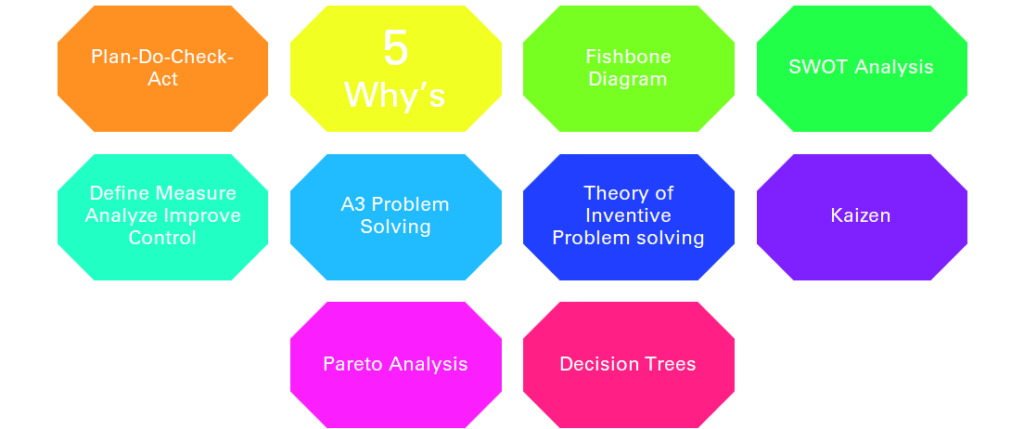In the fast-paced and dynamic world of business, the ability to effectively solve problems is a crucial skill. Whether it’s tackling operational challenges, optimizing processes, or navigating complex decisions, organizations rely on proven problem-solving techniques and frameworks to drive success. These methodologies provide structured approaches that help identify root causes, analyze data, and generate innovative solutions.
In this post and upcoming posts, we delve into the realm of problem-solving, unveiling the top ten proven techniques and frameworks widely utilized in the business world. Each approach has stood the test of time, demonstrating its effectiveness in addressing a range of issues faced by organizations. By understanding and applying these problem-solving strategies, you can enhance your decision-making capabilities, foster continuous improvement, and propel your business toward favorable outcomes.
Join us as we explore these powerful problem-solving methodologies, from the renowned PDCA cycle to the creative thinking principles of TRIZ. We’ll uncover their core principles, outline their step-by-step processes, and showcase real-world examples of their successful implementation. Whether you’re a business professional, an aspiring entrepreneur, or simply curious about problem-solving methodologies, this comprehensive guide will equip you with the knowledge and tools to tackle challenges head-on.
Get ready to unlock your problem-solving potential and discover the transformative impact these top ten techniques and frameworks can have on your business endeavors.

- PDCA (Plan-Do-Check-Act): PDCA is a problem-solving cycle that involves planning, executing, evaluating, and making necessary adjustments. It promotes continuous improvement by iteratively addressing and resolving problems.
- 5 Whys: The 5 Whys technique involves asking “why” repeatedly to uncover the root cause of a problem. By exploring deeper layers of causes, it helps identify underlying issues and formulate effective solutions.
- Fishbone Diagram (Ishikawa Diagram): A fishbone diagram is a visual tool used to identify and categorize potential causes of a problem. It organizes causes into categories like people, processes, equipment, and environment, facilitating a comprehensive analysis.
- SWOT Analysis: SWOT (Strengths, Weaknesses, Opportunities, Threats) analysis is a framework for evaluating an organization’s internal strengths and weaknesses and external opportunities and threats. It helps in strategic planning, decision-making, and problem-solving.
- DMAIC (Define, Measure, Analyze, Improve, Control): DMAIC is a problem-solving approach used in Six Sigma methodologies. It provides a structured framework for defining problems, measuring performance, analyzing data, improving processes, and implementing controls.
- A3 Problem-Solving: The A3 problem-solving method, derived from Toyota’s lean management principles, involves using a single sheet of paper (A3 size) to capture the problem, analyze its root causes, propose countermeasures, and create an action plan.
- TRIZ (Theory of Inventive Problem Solving): TRIZ is a problem-solving methodology that emphasizes creative thinking and systematic innovation. It provides a toolkit of principles and techniques to overcome technical contradictions and generate inventive solutions.
- Kaizen: Kaizen is a continuous improvement philosophy originating from Japan. It focuses on small, incremental changes in processes and systems to eliminate waste, improve efficiency, and drive ongoing problem-solving efforts.
- Pareto Analysis: Pareto analysis, also known as the 80/20 rule, helps identify the most significant factors contributing to a problem. It prioritizes efforts by focusing on the vital few factors that have the greatest impact.
- Decision Trees: Decision trees are graphical tools used to map out decisions and potential outcomes. They help in analyzing complex problems and considering multiple alternatives, enabling more informed and structured decision-making.
These problem-solving techniques and frameworks have been widely adopted and proven effective in various business contexts. Depending on the nature of the problem, selecting, and applying the most suitable technique or framework can greatly enhance problem-solving capabilities and drive positive outcomes.
6 thoughts on “Top Ten proven problem-solving techniques and frameworks”